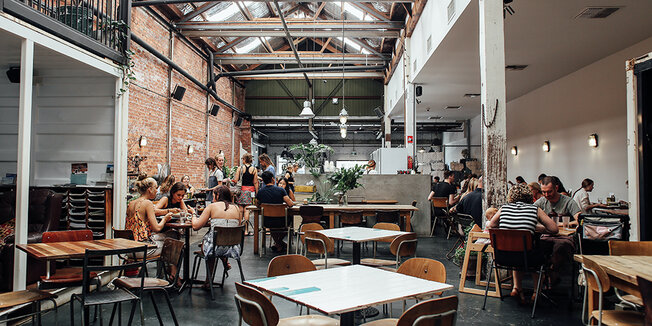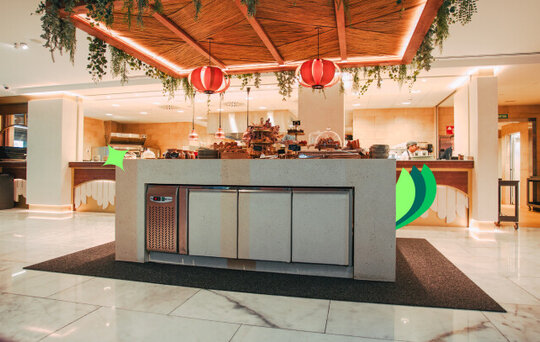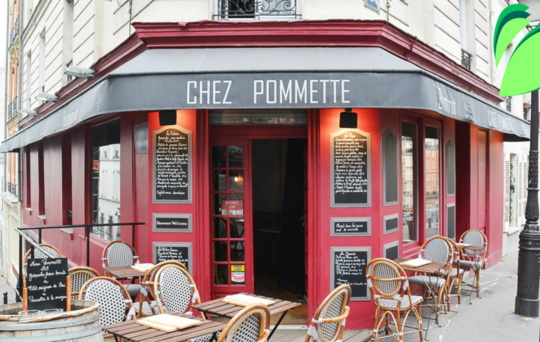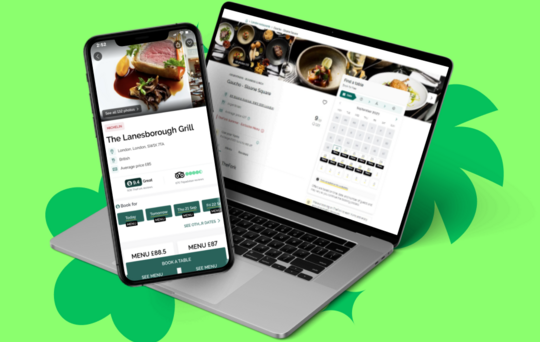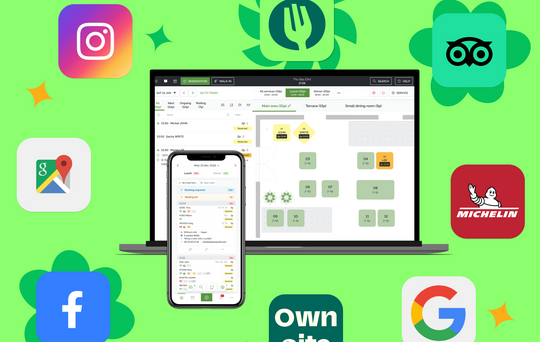Storytelling: Your tale at the heart of your restaurant marketing
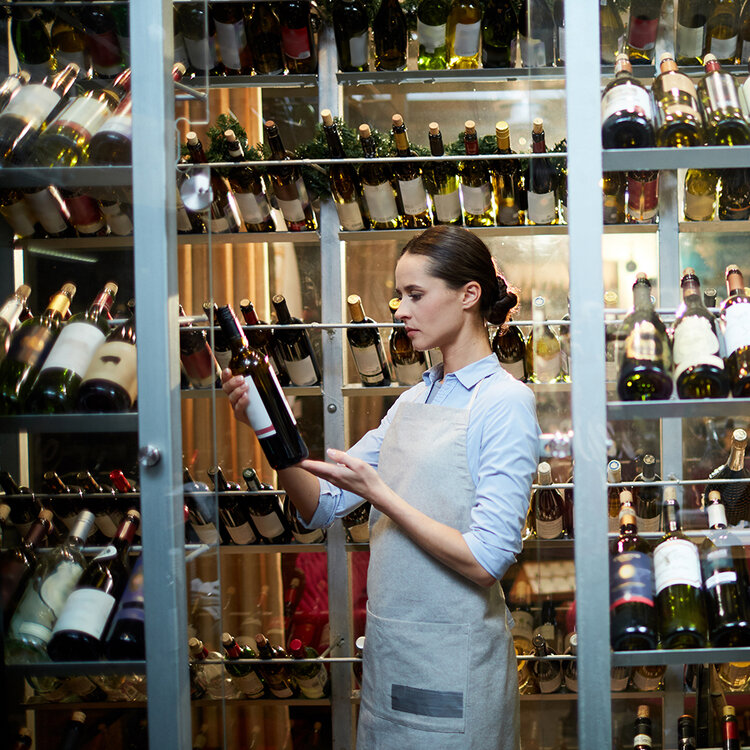
- • What is Restaurant Storytelling?
- • How restaurant storytelling enhances marketing
- • The importance of authenticity in restaurant storytelling
- • Try TheFork Manager today
- • Finding and sharing your unique restaurant story
- • Building a Brand through Stories
- • Practical ways to implement restaurant storytelling in your marketing
- • Get Started
- • Empty tables and ever-increasing costs?
A restaurant is much more than a place to have a meal. Over time, restaurants have evolved into brands, and experiences - places with authentic stories that guests respond to. By learning how to tell a story of your own, you can develop a strong connection between your brand and consumers. We’ve compiled all the information you need to understand the power of restaurant storytelling, how it can improve your marketing, and how to use it to successfully increase reservations.
What is Restaurant Storytelling?
Storytelling is the process of conveying a message, emotion, or identity through a storyline. As perhaps our oldest surviving art form, learning how to tell a story is the most effective way to capture attention, prompt action, or leave a lasting impression.
How restaurant storytelling enhances marketing
In restaurant marketing, brand storytelling goes beyond the mere sharing of information. If you can uncover and use narratives central to your restaurant’s foundation or everyday operations, they can become powerful marketing tools to convey your restaurant's personality and passion. Digital storytelling happens all over social media, but you can use any available channel to tell stories that will make guests feel connected with your ethos. They won’t be able to help but feel the authenticity and tangibility of each tale and character they encounter.
Restaurant storytelling allows you to bring your business to life and create an emotional connection with your guests. It enables you to convey unique characteristics and values that go beyond what's on your menu.
The importance of authenticity in restaurant storytelling
Autenticità è fondamentale per creare una connessione emotiva con i clienti. Raccontare storie vere e genuine, come la passione del proprietario o del chef per la cucina, costruisce fiducia e rende il ristorante più memorabile
Authenticity is key to creating an emotional connection with customers. Telling true, genuine stories, such as the owner's or chef's passion for cooking, builds trust and makes the restaurant more memorable.
Try TheFork Manager today
Finding and sharing your unique restaurant story
When it comes to finding your own restaurant story, reflect on your personal journey and those of the people around you. Consider what you can tell guests about yourselves. Here’s a list of restaurant storytelling example topics to get you started:
1. The Story Behind Your Restaurant
Every restaurant has a story. Perhaps you started your restaurant out of a passion for a particular product. Maybe it's been in the family for decades, or you knew from a young age that you wanted to be a restaurateur. Remember that your story, whatever it is, is what makes your restaurant unique, so don’t be afraid of sharing it with others.
2. The Faces Behind the Business
Often, the most compelling stories you can tell about your restaurant are those of the people behind it. Introduce your guests to the chef, sommelier, or dedicated staff who make every visit a special experience. Share their passions and inspirations so that guests can get equally excited about a visit to your restaurant.
3. Put Your Guests in the Spotlight
Your diners also play a role in your restaurant's story. By sharing their experiences and memories, you can attract potential guests and encourage repeat visits. Post photos and reviews from satisfied customers and actively involve them in your story. Share the great reviews you receive from your guests, which, if your restaurant is published on TheFork, can be found in the review overview.
4. The Products on Your Menu
With growing interest in sustainability measures and clean living, guests want to know where your products come from. Involve producers and local businesses you collaborate with in your restaurant’s storytelling. A beetroot is just a beetroot, but a beetroot from the Hill family in Lincolnshire, who have been farmers for five generations, is more than just a beetroot: it’s a marketing strategy.
5. The story of your local community
Involve the local community in your storytelling, using local ingredients and local artistic decorations. This creates a sense of pride and belonging among local customers.
As is true of all storytelling, getting people more involved in how you communicate will help you to succeed. Involve the local community in your restaurant story by using local ingredients or incorporating local artwork into your restaurant decor. This will foster a sense of connection between your business and the local community, generating a mutually beneficial sense of pride and belonging.
Building a Brand through Stories
Storytelling is an effective tool for building your restaurant's brand. What makes storytelling effective is consistency across the restaurant’s tone, values and branding. A strong brand fosters a warm bond and trust.
Practical ways to implement restaurant storytelling in your marketing
How do you incorporate all these stories into your restaurant marketing? The best way is through effective text and visuals. Showcase your dishes in all their glory, display images of the restaurant staff in action, and breathe life into your story with visual elements wherever possible.
To implement effective storytelling:
- On social media: Post regular updates and stories on your social media channels. Share photos of special dishes, behind-the-scenes moments, and guest experiences.
- On your restaurant page on TheFork: With a good description and photos, you can create the right ambience before guests even arrive. If you don't have a restaurant page yet, you can set one up here.
- On your website: Create an ‘About Restaurant’ page on your website to tell the story of your restaurant.
- In email marketing: Add storytelling elements to your newsletters centred around new menu items or staff experiences.
- On your menu: Bring your menu to life with descriptions that reveal the origin of dishes and ingredients.
- During events: Use storytelling to accompany the announcement of special events or theme nights.
Get Started
Storytelling is the key to success in your restaurant marketing. By sharing your unique story, highlighting the people behind your menu, and putting your guests at the centre of what you do, you can build a strong brand that attracts guests to your restaurant. To get started with storytelling, the most important advice is just that: get started! Get the word out there and give guests what they want: an unforgettable meal and a fantastic story to take away.
Empty tables and ever-increasing costs?
- What is Restaurant Storytelling?
- How restaurant storytelling enhances marketing
- The importance of authenticity in restaurant storytelling
- Try TheFork Manager today
- Finding and sharing your unique restaurant story
- Building a Brand through Stories
- Practical ways to implement restaurant storytelling in your marketing
- Get Started
- Empty tables and ever-increasing costs?



